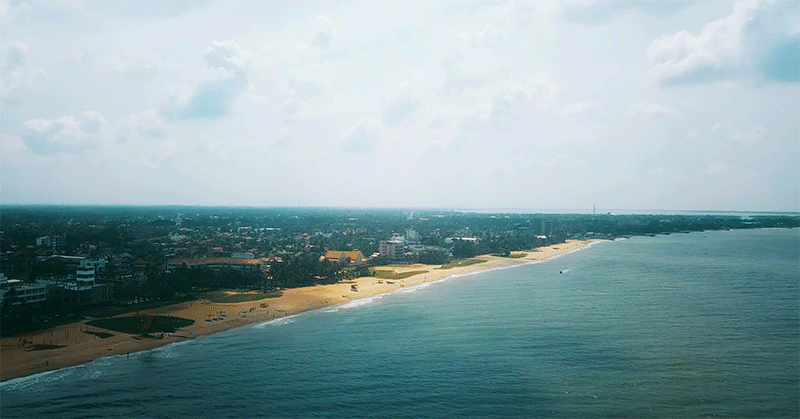
What are the 7 best cities to visit in Sri Lanka?
Friedrich Nietzsche used the phrase “are born while walking.” And it’s possible he was right. An excellent way to see the below-mentioned best cities to visit in Sri Lanka and discover its history, architecture, and other fascinating aspects is to go on a walking tour. The 7 best cities to visit in Sri Lanka.
Table of Contents
- What to see in Sri Lankan cities?
- Sri Lanka city tours and walking tours
- Here are the best cities to visit in Sri Lanka?
- What to see in a Sri Lanka trip?
- Colombo
- Savour a leisurely buffet lunch of Sri Lankan cuisine.
- Kandy city
- Galle city
- Nuwara Eliya
- Key Attractions in Nuwara Eliya:
- Anuradhapura city
- Polonnaruwa city
- Trincomalee
- Bentota City
- Best small cities to visit in Sri Lanka
- What are the 10 Best Small Cities to visit in Sri Lanka?
- 1. Balapitiya
- 2. Jungle Beach
- 3. Mirissa, Matara
- 4. Kitulgala
- 5. Belihuloya
- 6. Peradeniya
- 7. Ella
- 8. Kataragama
- 9. Kurunegala
- 10. Tangalle
- Practical Tips for City Hopping in Sri Lanka
What to see in Sri Lankan cities?
Sri Lanka’s cities offer a diverse range of experiences, from ancient wonders to colonial charm and modern vibrancy. By including these urban destinations in your itinerary, you’ll gain a well-rounded understanding of Sri Lanka’s rich cultural tapestry and historical significance.
Whether you’re exploring the bustling markets of Colombo, marveling at the ancient stupas of Anuradhapura, or sipping tea in the cool climes of Nuwara Eliya, each city provides a unique window into the soul of this fascinating island nation. Plan your trip wisely, respecting local customs and embracing the warm hospitality of the Sri Lankan people, and you’re sure to have an unforgettable urban adventure in the pearl of the Indian Ocean.
Sri Lanka city tours and walking tours
The phrase “are born while walking” was used by Friedrich Nietzsche. And it’s possible he was right. An excellent way to see below mentioned best cities to visit in Sri Lanka and discover its history, architecture, and other fascinating aspects is to go on a walking tour. The 7 best cities to visit in Sri Lanka.
On the island, there are many different walking tours to pick from, such as trekking, hiking, and city tours. Walking tours have been more and more popular by visitors in recent years, and they remain highly recommended for vacationers.
You can select the precise areas you wish to visit on foot when you reserve a walking tour. Being off a wind-powered car also makes it possible for you to have a closer relationship with the environment. If you enjoy exploring cities like most tourists do, then the seven Sri Lanka city tours on our list are excellent choices.
More than just helping you unwind, a stroll around Sri Lanka’s streets will show you some of the natural beauty for which the country is renowned. With tens of thousands of walking tour destinations, this book takes you on a tour of some of the best in Sri Lanka.
Here are the best cities to visit in Sri Lanka?
- Colobmo
- Kandy City
- Galle City
- Nuwara Eliya city
- Anuradhapura city
- Polonnaruwa city
- Trincomalee city
What to see in a Sri Lanka trip?
With the national parks, cultural monuments, museums, rain forests and other tourist places open as usual, more Sri Lankans are looking to get out of the city, and a large number of people are in search of domestic tourist places as part of the growing staycation trend. The Google search trend for Sri Lankan travel is largely increased over the last few weeks in parallel to the easing travel restrictions. However, the travellers are not venturing on Sri Lanka tours like 5-days Sri Lanka tour or 7-days Sri Lanka tours, and they tend to book short trips such as 1-day Sri Lanka tours and 2-days Sri Lanka trips.
We have seen a sudden increase of readers on our blogs and travel website over the last few weeks and they are in search of tours and destinations in Sri Lanka. More than 90% of these users are from Sri Lanka and very often from foreign countries.
If it sounds like you would like to have a list of attractive small cities in Sri Lanka to venture on your Sri Lanka next trip? We have chosen the below list of cities by considering various factors such as weather, safety, landmarks and sights, parks and outdoors, connectivity, diversity, culture, museums, etc. here is the list of 10 best small cities to travel in Sri Lanka.
Colombo
One excellent way to experience the city without going over budget is to take advantage of the Free Walking Tour of Colombo. Learn more about the past of the city of Colombo, its historical sites, and its historic temples, such Gangarama. With a plethora of people and an overwhelming variety of sights, sounds, and smells, the city has developed into one of Sri Lanka’s most vibrant and intriguing metropolises in contemporary times. One of the most popular tourist activities in Colombo is the city tour, which is included in most Sri Lanka vacation packages.
As Sri Lanka’s largest city and commercial hub, Colombo serves as the perfect introduction to the country’s urban landscape.
Key Attractions in Colombo:
- Gangaramaya Temple: A stunning Buddhist temple complex
- Pettah Market: A bustling bazaar offering a sensory overload
- National Museum: Housing artifacts from Sri Lanka’s ancient civilizations
- Galle Face Green: A scenic oceanfront promenade
Why Visit: Colombo offers a blend of colonial architecture, modern development, and rich cultural experiences. It’s an excellent place to experience Sri Lanka’s culinary scene and nightlife.
Best Time to Visit: December to March for drier weather
Accommodation Tip: Stay in Colombo 3 or 7 for easy access to key attractions and upscale dining options.
Colobmo city tour program in a nutshell
After breakfast at your accommodation, set out on a city tour of the capital of Sri Lanka. Explore the city’s stunning parks, landmarks, museums, well-known temples, and top-notch shopping.
Dating back to 1877, the National Museum is the largest museum in Sri Lanka. It is home to rare treasures from the island’s ancient and colonial periods, such as statues, swords, guns, masks, and carvings.
The Gangaramaya, one of Sri Lanka’s most beautiful and well-known Buddhist temples, ought to be seen later. Amazing sculptures were carved onto the entrances and hallways of the major sanctorum. The walls and ceilings are covered in pictures and miniature paintings that illustrate Buddhist stories.
You may easily take a duck paddle boat trip on the Beira Lake, which is close to the well-known Gangaramaya temple. As an alternative, you may take a quick break and go shopping at the mall by the lake. But you have to see the tranquil Seema Malaka Temple, which is located right in the middle of the lake.
Following that, you’ll have a picturesque drive to the Colombo Fort neighbourhood, which is home to a number of impressive colonial-era structures. The Galle Buck lighthouse, the old parliament, St. Peter’s Church, Lloyd’s Building, and the clock tower are a few of the area’s most well-known structures.
Savour a leisurely buffet lunch of Sri Lankan cuisine.
Once lunch is over, you’ll visit Independence Square, one of the most iconic places in Colombo to unwind. There’s also a memorial museum and a sizable shaded park outside in addition to the memorial hall.
The largest and best park in Colombo, Viharamahadevi Park, is the next visit. If you didn’t have time to unwind at Independence Square Park, you may do so here under the shade of these magnificent trees. The war memorial, lake, suspension bridge, aquarium, and kids’ play area are just a few of the many attractions that are suitable for families with little children.
After that, we’ll take you to one of the city’s well-known department stores, such as Cotton Collection or Odel, for some vintage retail therapy.
Go to the Galle Face Green in the evening afterward. It’s located right in the middle of the busy Galle Road, which runs parallel to the ocean. Savor some authentic street food in Colombo, such as isso wade and kottu, while interacting with friendly people and observing kids flying kites and playing cricket. Galle Face Green is a well-liked location in Colombo because of its lovely sunsets, laid-back vibe, and plenty of fresh air.
When the day is complete, you can return to your hotel with a wealth of adventures and tales to share.
Kandy city
One of the most well-liked city trips in Sri Lanka is the Kandy tour. Due to popular demand, the Kandy city tour and other city excursions in Sri Lanka are included in the majority of travel packages to the country. You’ll start your day trip by going to the Kandy viewpoint. From here, drive up a hill close to Kandy Lake to get breath-taking views of the town below the lake.
Nestled in the central highlands, Kandy is the last royal capital of Sri Lanka and a UNESCO World Heritage site.
Key Attractions in Kandy:
- Temple of the Sacred Tooth Relic: Housing a tooth of the Buddha
- Royal Botanical Gardens: Showcasing diverse flora
- Kandy Lake: A picturesque man-made lake in the city center
- Kandyan Dance Performances: Showcasing traditional Sri Lankan arts
Why Visit: Kandy offers a deep dive into Sri Lankan history, culture, and Buddhist traditions. It’s also a gateway to the scenic hill country.
Best Time to Visit: January to April for the best weather
Don’t Miss: The Esala Perahera festival in July/August, featuring elaborate processions and cultural performances.
The Last Kandyan Monarch
Sri Wickrama Rajasingha, the previous ruler of Kandy, artificially created Kandy Lake. Both locals and tourists like taking walks around the lake and even taking boat rides on it.
Take a stroll around the botanical gardens in Peradeniya, which are home to over 4,000 plant species, including various types of palm trees, medicinal plants, and orchids. There are plenty of photo opportunities where you may take pictures of the various flower kinds.
The magnificent vista of the Kandy Tea Factory
Visit a tea factory in Kandy to witness the leaves being turned into the well-known Ceylon tea. Thanks to the British, who converted the majority of the country’s land into plantations, tea is now a significant export from the nation.
After lunch, you will be taken on an escorted city tour of Kandy, which will include shopping and a visit to the gem museum. People going about their daily business keep the town of Kandy busy. Among the various items you might find at this market are tea, spices, and herbs. Among the many mementos up for grabs are wooden sculptures, batiks, and apparel.
Gem museum
Moving on to the next item, which is jewels. Sri Lanka is known as the “Isle of Gems,” and one of the main cities there is Kandy, where a large selection of jewels are available for purchase. The selection of immaculately polished and cut stones is astonishing. Among the notable gems that are offered are sapphire, Alexandrite, ruby, and star ruby.
Temple of the tooth relic
Travel to the Temple of Tooth as the sun sets; it’s a beloved and essential sight for Buddhists all around the country. This is the holiest place in all of Buddhism, where the priceless tooth relic of Lord Buddha is resting in a golden coffin. It is located in the Royal Palace Complex, an amazing landmark in and of itself. As you join hundreds of devotees in devotion, enjoy the peace, incense aroma, and sounds of chanting in the temple while lighting oil lights and placing a plate of flowers on the altar.
Kandyan cultural show
A display of traditional Kandyan dancing, which reflects the rich history and culture of Sri Lanka, will mark the conclusion of the cultural event. This is the official dance of the nation, and it’s rather impressive.
It’s time for you to return to your hotel after an amazing day.
Galle city
Situated on the southwest coast of Sri Lanka, Galle is home to a rich cultural legacy, stunning scenery, and an intriguing past. The day trip destination of Galle is highly recommended due to its captivating museums, stunning beaches, and structures from the colonial past.
One of the most well-liked destinations for city trips in Sri Lanka is Galle. You may see a lot of different locations and activities when you take the Galle City tour. Your trip to Galle begins at seven in the morning in Colombo and travels to the south coast of Sri Lanka. There will be numerous stops along the route.
Galle, located on the southwestern coast, is famous for its well-preserved Dutch-colonial Fort.
Key Attractions in Galle :
- Galle Fort: A UNESCO World Heritage site
- Maritime Museum: Exploring Sri Lanka’s naval history
- Traditional Mask Workshops: Showcasing local craftsmanship
- Unawatuna Beach: A nearby crescent-shaped beach perfect for relaxation
Why Visit: Galle offers a unique blend of colonial architecture, artistic communities, and beautiful beaches. It’s ideal for history buffs and culture enthusiasts.
Best Time to Visit: December to April for optimal beach weather
Insider Tip: Take a guided walking tour of Galle Fort to fully appreciate its historical significance and hidden gems.
Galle Fort
The Galle Fort, a UNESCO World Heritage Site, is a must-visit tourist site because it showcases a wealth of history dating back to the 16th century. The fort is home to numerous buildings from the colonial era, including shops, museums, and lighthouses. The Dutch Reformed Church, which has an uncommon blend of colonial and indigenous architectural elements, is another noteworthy site.
For those interested in marine history, the marine museum housed within the fort is a fascinating place to visit. This place offers an exploration of Sri Lankan boat-building techniques and marine traditions. In addition, if you want to take in a breathtaking view of the coastline, you should not miss the Galle Lighthouse.
Unawatuna Beach, located outside the fort, beckons with soft white sand and crystal-clear waters. Enjoy a stress-free afternoon by swimming, sunbathing, and participating in water sports. Furthermore, boating in the stunning Koggala Lake is highly recommended because it offers the chance to witness crocodiles, monkeys, birds, and other wildlife.
Galle boasts a bustling market scene, mouthwatering local cuisine, and stunning colonial-era architecture that are ideal for strolls in addition to these must-see attractions. Galle is a fantastic destination that will enthrall you with its magnificent scenery and rich history.
Nuwara Eliya
Known as “Little England,” Nuwara Eliya is a charming hill station with a distinctly colonial atmosphere.
Key Attractions in Nuwara Eliya:
- Victoria Park: A well-manicured garden with diverse flora
- Gregory Lake: Offering boat rides and scenic walks
- Tea Plantations: Learn about Ceylon tea production
- Horton Plains National Park: Home to the famous World’s End precipice
Why Visit: Nuwara Eliya offers a cool respite from the tropical heat, stunning landscapes, and a unique cultural blend of British and Sri Lankan influences.
Best Time to Visit: March to May for the best weather and blooming flowers
Don’t Miss: A visit to a tea factory to learn about the tea-making process and sample world-renowned Ceylon tea.
Visiting the Goldf Club and Its Environment in Nuwaraeliya
One of the oldest golf clubs in Asia, the renowned Nuwara Eliya Golf Club, will be visible from the outside to you. When you arrive in the town, you will be greeted by one of Sri Lanka’s oldest post offices. One of the most iconic colonial Tudor-style buildings, it stands out due to its red brick façade. Following that, you’ll see other iconic colonial buildings that highlight the influence of the British during their colonialism period. The HNB Bank, the Nuwara Eliya Police Station, St. Xavier’s Church, and the stately hotel—a well-known colonial masterpiece with exquisitely manicured grounds—are among these buildings.
The lovely park known as Victoria Park, which honors Queen Victoria, is the next stop. Take some time to meander through the park and enjoy the views, sounds, and scents of its lovely trees and grass. The Nuwara Eliya Race Course is the next colonial treasure from the British era that we will visit. The only horse racing track in Sri Lanka, this one is well-known for its annual April celebrations that resemble the Ascot Races.
You will then explore Lake Gregory, an amazing man-made lake from the colonial era. Originally intended for power generation, it is now a well-liked tourism attraction for both residents and visitors. Magnificent mountains can be seen in the distance, framing this lovely lake. You’ll have plenty of time to take advantage of the activities offered on-site. like canoeist boats and other aquatic activities.
Haggala Botanical Garden and Sita Aamman Temple
After lunch, we’re going to the Hakgala Botanical Gardens and the Sita Amman Temple. These two locations make up the old “Ashoka Vatika.” Adjacent to the second-largest Botanical Gardens in Sri Lanka, Hakgala, lies the Sita Amman Temple, a shrine devoted to Lord Rama’s spouse, Sitadevi. There are many different flower beds, including rose and orchid beds, in this exquisite collection of gardens.
On the way back to the city, you’ll stop at a strawberry farm. Sample some of our favorite sweets, such waffles, strawberries and cream, or strawberry cheesecake. When you get back to the city in the evening, you will be taken to the Bale Bazaar, a well-known neighborhood flea market noted for its reasonably priced winter apparel.
Anuradhapura city
As one of the ancient capitals of Sri Lanka, Anuradhapura is a treasure trove of historical and archaeological sites. Venturing on a Anuradhapura city tour is the best way to experience Sri Lanka’s most ancient city. Because it enables visitors to explore the adjoining temples in Anuradjaopura, it is one of the most popular city excursions in Sri Lanka. Anuradhapura, the former capital of Sri Lanka, will be the main attraction of a full-day tour that leaves from your location. Your first destination in Anuradhapura after arriving early in the morning would be the terrified bo tree.
Key Attractions in Anuradhapura:
- Sri Maha Bodhi: The oldest historically authenticated tree in the world
- Ruwanwelisaya: A massive stupa dating back to the 2nd century BC
- Jetavanaramaya: Once one of the tallest structures in the ancient world
- Isurumuniya Temple: Known for its intricate stone carvings
Why Visit: Anuradhapura offers unparalleled insights into ancient Sri Lankan civilization and Buddhist heritage.
Best Time to Visit: May to September for drier weather in the region
Pro Tip: Rent a bicycle to explore the vast archaeological park at your own pace.
Sacred bo tree
The main stem of the Bodhi tree is where Buddha obtained enlightenment. Sanghamitta, the daughter of Emperor Ashoka, brought a seedling from India that is known as the Sacred Bo Tree, also known as Jaya Sri Maha Bodhi. In a ceremonial manner, King Devanampia Tissa planted this seedling here after receiving it.
The Brazen Palace, or Lovamahapaya, of King Dutugemunu, is the next destination. This majestic nine-story edifice is supported by stone pillars. The edifice that gave origin to the nickname “Brazen Palace” was its copper or bronze roof. One thousand monks and their attendants were to be housed in this palace, which also provided lodging and medical care for the injured.
The Dagaba Ruwenwelisaya
After that, you’ll travel to Sri Lanka to witness Ruwanwelisaya Dagoba, the oldest stupa. A reminder of Sri Lanka’s illustrious architectural past is the Ruwanwelisaya. The Great Stupa, or Ruwanwelisaya, was constructed in 140 BC by the victorious King Dutugemunu. This stupa is evidence of his bold undertaking and the exceptional contribution it made to the revival of Buddhism in the country.
The Tissa Wewa
After that, you’ll go to Tissa Wewa, an artificial reservoir built by King Devanampiya Tissa in the third century BC to supplement Anuradhapura’s water supply and provide irrigation for the king’s royal gardens. Later on, a network of irrigation canals was built and connected to this reservoir.
This is where you will find Miriswatiya Dagoba, the first of King Dutugemunu’s monuments. After he was sanctified, an ornate sword with a priceless Buddha relic was set down on the coast on the seventh day of the Tissa Wewa water festival. The monarch was unable to draw his sword after returning from his bath in the reservoir, despite their repeated attempts, so they built this dagoba on top of it. They interpreted this as a sign of a healing.
The Temple of Thuparama
Next is a visit to the Thuparama Temple. It was built before any other stupa in Sri Lanka, following Buddhism’s introduction to the country. Built by King Devanampiya Tissa. The Thuparama is among the smallest stupas in the world, if not the island. Buddhists hold that Mahinda, the son of Indian King Ashoka, brought a relic of Lord Buddha’s right collarbone to Sri Lanka.
The Monastery of Abayagiri
Next, you will be taken to the famous Moonstone, which is kept in the Abayagiri Monastery and is located at the top of the main staircase in the main building. Among the finest and best-preserved relics from the 7th and 8th centuries, this moonstone is highly regarded. And then we will see the guardstone. Before the South Indian invaders leveled the Abhayagiriyi monastery, the Rathna Prasada was perched atop it. A guardstone, painstakingly carved over the years by the several kings who have come before him, shows a god monarch shielded by a Naga Gala, a five-headed serpent, holding a vase of flowers, symbolizing riches.
The largest monastery complex in the Anuradhapura kingdom, the Abhayagiri Monastery Complex, was built by the Sinhalese king Vattagamini Abhaya. You then enter the complex after that. Included in this complex is the main stupa, Abhayagiri Stupa, which was constructed over the footprint of Lord Buddha. A limb of the Sri Maha Bodhi tree is also present. The stupa was the second-tallest structure on the island when it was first built, at 370 feet tall. Excavated during the excavations, the new museum at Abhayagiri Monastery was devoted to Fa-hsien in order to preserve and display the objects. Among these antiques was gold jewelry set with stones and gems. This museum’s main goal is to hold all of the items and relics discovered during archaeological excavations.
The statue of Samadi Budda
After exploring this complex, proceed to the Samadhi Buddha Statue, a masterwork of Sinhala sculpture and art. Situated atop the Bodhi tree, facing the four cardinal directions, the 2-meter-tall granite sculpture stands guard. It is carved into the meditative posture known as Samadhi, which is associated with the Buddha’s first enlightenment.
The Monastery and Stupa in Jetavanarama
You will then encounter the Jetavaranama Stupa and monastery. Built in the third century, this magnificent structure was once the world’s largest brick structure and the third largest of its type. This enormous bulbous stupa, composed of more than 90 million bricks, inspires thoughts of peace, introspection, and a sense of being connected to the past. The building’s sheer size serves as a testament to the era’s accomplishments and tenacity, making it a worthwhile tourist destination. It is surrounded by the ruins of a monastery that originally held three thousand monks.
Twin Pond
Kuttam Pokuna, popularly known as the “Twin Ponds,” insists that this will happen. It is an architectural environment, constructed in the eighth century as a swimming pool with terraces for the monks.
Lunch will be provided to you at about 12:30 p.m.
The Temple of Isurumuniya
The day trip will continue with a visit to Isurumuniya Viharaya after lunch. The stunning Isurumuniya Viharaya temple is perched atop a rock and partially encased in a cave. Elephant sculptures in fine detail may be found near the foot of the cliff, perched atop a rock that looks as though it is rising from a gorgeous pond. The renowned “Isurumuniya Lovers” sculpture, which was originally placed on a granite slab but is now kept in the Archaeological Museum, is one of the temple’s many exquisite carvings. At the conclusion of the city trip, you will visit the Aukana Buddha Statue and Mihintale.
The Mihintale
Given that Buddhism originated in Mihintale, it is a must-visit location for Buddhists worldwide. Tourists come in droves to this location, in addition to pilgrims, to climb the hill and view the monastic community’s many religious shrines. Adding to the prominence of the location is one of these shrines, a majestic 40-foot stupa built in the first century BC.
The Buddha Statue in Aukana
According to historical reports, the Aukana Buddha Statue commands respect as one of Sri Lanka’s tallest standing Buddha statues. The Buddha statue is a magnificent sculpture that stands 42 feet tall and is a monument to the skill and workmanship of those who crafted it. You’ll be returned to your hotel at the end of the tour in the evening.
Polonnaruwa city
In Sri Lanka, one of the most well-liked city trips is the Polonnaruwa tour. It gives visitors access to the historic city of Polonnaruwa’s old temples, palaces, gardens, and several other ancient landmarks. One of the most well-liked tourist spots in Sri Lanka is the historical museum of Pollonnaruwa, which is also part of this city tour.
The Museum of Archaeology
The Archaeological Museum, which has an amazing collection of bronze sculptures and scale models of the sites that depict buildings as they may have appeared in the past, will be your first visit when you arrive in Polonnaruwa. The museum offers a plethora of knowledge regarding the artwork and background of the former capital city during the Middle Ages.
The Citadel of King Parkramabahu
You will next be brought to the royal residence and castle of King Parakramabahu I. When it was first constructed, it was a seven-story structure that was incredible for people living in those days. The Audience Chamber, also known as the Council Chamber, is a large room with intricate carvings that resembles a pavilion. Secluded within the palace grounds is where you’ll find the Royal Bathing Pool.
Shiva Devala
We will then proceed to the Quadrangle, which is the nerve core of the historic city. The complex comprises the remnants of several historic structures, starting with the Shiva Devale. These include the Thuparamaya, an image house that has been preserved well, the Nissanka Latha Mandapaya, popularly called the Floral Altar, the Hatadage, or House of Seven Relics, and the Polonnaruwa Vatadage, a creation that has been highly esteemed and significant in Sri Lankan history.
Satmaham Prasada
After that, you will see the enormous rock-carved book known as the Gal Potha and the extraordinarily strange and elaborate Satmahal Prasadaya, which was inspired by eastern architecture. It was six stories high and looked like a stepped pyramid.
Rankoth Vehera and Pabalu Vhehara
From here you can take a bus to the Pabalu Vehera, a symbol of love, and the Rankoth Vehera, the fourth largest dagoba in Anuradhapura after the three giants.
The Monastery of Alahana
The next destination is the Alahana Pirivena Monastery, a stunning complex of monasteries founded by King Parakramabahu I in the eleventh century. Housed within is the Buddha Seema Prasada as well as the Lankatilake image house.
The Kiri Vehera
The next item on the list would be the Kiri Vehera, a shrine with a white facade and the best-preserved dagoba in Polonnaruwa.
Gal Vehera
The Gal Vihara and its renowned sculpture collection can be marveled at at the following destination, which is toward the north. Four Buddha statues embedded in a granite cliff are among the island’s most striking rock carvings.
Nelum Pokuna
The Lotus Pond, an exquisitely crafted granite pool fashioned like a lotus flower, and the Thivanka Image House, a sizable monastery in Polonnaruwa, are the next stops on the itinerary. The Nelum Pokuna comes next.
Parakrama samudra
You will be taken on an escorted tour to experience the wonder of the Parakrama Samudraya, which, because of its immense magnitude, is also known as the Parakrama Sea. This artificial lake was made possible by King Parakramabahu I’s engineering genius. It fills up as rainwater gathered through eleven channels feeds a network of irrigation canals and smaller tanks.
The King Nissanka Malla Royal Palace Complex is the next stop. A modest wall encircles the raised platform that is supported by eight granite columns. An adorable small granite stupa sits in the center of the platform. You’ll also get to see the Nissanka Raja Sabha Mandapa, also known as the royal audience hall or council chamber.
The stunning Giant Statue of Parakramabahu I, a piece of 12th-century monumental art, will be the next destination on your bus trip. Wearing a sarong and holding a sacred scripture, the towering and dignified figure is carved onto a rock wall. We will halt at Pothgul Vihara next. Of all the ancient landmarks in Sri Lanka, this library and monastery complex is the tallest. After the tour ends in the evening, you will be returned from Polonnaruwa to your starting point.
Trincomalee
Perhaps not the most well-liked city trip destination in Sri Lanka is Trincomalee. Still, investing time and money in it is well worth it. The Trincoimlaee city tour is not like other city excursions in Sri Lanka in a lot of ways. The only city tour we cover in this post that allows you to delve into the religious and cultural facets of Hinduism is the Trincomlaee City Tour.
What includes in Trincomalee city tour?
- You will observe the harbor
- Pigeon Island
- The Fort Frederick,
- You’ll go for a dolphin-watching excursion at six in the morning.
If you take a half-hour boat ride offshore off the coast of Trincomalee, you can see dolphins surfacing regularly. On the east coast, whales are often only sighted in the spring (March through May), but you never know when you could be fortunate enough to spot one in the off-season.
After the dolphin viewing excursion, the boat will take you to Pigeon Island. Pigeon Island is one of the two maritime national parks in Sri Lanka. It boasts amazing coral reefs that serve as a haven for a wide range of exquisite tropical fish and other aquatic creatures including turtles. For those who would like to try it out, there is an optional snorkeling adventure.
Perched atop the rock formations spanning the island, take in breath-taking views of the ocean.
After breakfast, your next course of action will be to return to the mainland and make your way to Fort Frederick. Explore the fort, which is the site of the renowned Konaswaram Temple. It is situated perilously atop Swami Rock and offers stunning views of the eastern coast of India and the Bay of Bengal. There are several temples inside the fort itself.
Savor a quick bite at a nearby restaurant
After lunch, the group will return to Trincomalee and make a stop at the city’s natural harbor, which is spread across several acres of both land and water. It consists of the inner harbor, Dutch Bay, and Back Bay. Wander around the numerous restaurants and cafes that line the harbor’s edges and take in the sights and sounds.
The next stop on your agenda is Marble Beach, one of the most beautiful and unspoiled beaches in the Trincomalee area. You may be confident that swimming in shallow waters is safe there because the Sri Lanka Air Force is in charge of it. Go on a stroll down the beach and search for marble pebbles.
Bentota City
Many beach lovers who are vacationing on the west coast like the one-day Bentota city trip, which is one of the most well-liked city tours in Sri Lanka. The Bentota city tour mostly covers Bentota, but it also includes a lot of intriguing activities including boat rides, hamlet excursions, cooking classes, and strolls along the Bentoat River. In Bentota, your adventure will start at eight in the morning. Your chauffeur will transport you to the following sites once your hotel is dropped off.
Visit to Lunuganga Garden excursion
Architect Geoffrey Bawa (23 July 1919 – 27 May 2003) created the Lunuganga estate with his concept. This farmhouse served as both his first source of inspiration and his laboratory; as his celebrity rose, he utilized it as a refuge. The mansion is decorated with an abundance of global artifacts and antiquities that highlight Bawa’s distinct style and quirky charm.
The Madu Ganga Biodiversity Area
Savor a pleasant two-hour boat ride down the Madu River while seeing a diverse range of wildlife. Explore the paths that the mangroves have created, which are concealed. Visit the people who cultivate cinnamon on one of the little islands. View the aquatic birds in their natural habitats.
Lunu Ganga
Bevis Baawa’s House and Garden Agatha Christie, Vivien Leigh, Sir Lawrence Olivier, and many others were among the guests of Bevis Bawa’s famous garden. The Garden at Brief provides evidence of his developing personality. The tall gateway with the statue cap, hidden in the dense bamboo hedge, is the way to enter Bevis’s realm. Then, as we meander around the lush perimeter path, we’ll pass by the circular pond and water steps, the Japanese garden, and the large lawns. Its maker’s proof can be found all throughout the garden.
Kosgoda Sea Turtle Hatchery
Members of the Chelonii order include turtles. Researchers and conservationists also refer to them as chelonians. The distinctive bony coating, or carapace, that chelonians receive from their ribs serves as a protective shell. Turtles are an exceptionally ancient group of creatures, with the first known appearance occurring more than 220 million years ago, during the Triassic Period. The order Chelonii, commonly known as the Testudines, is composed of three types of reptiles: terrapins, tortoises, and turtles.
Best small cities to visit in Sri Lanka
Apart from the 7 major cities discussed above, there are many other interesting small cities in Sri Lanka and those cities also offer a wide range of interesting tourist attractions. Below are some of those small cities that most tourists like to visit.
What are the 10 Best Small Cities to visit in Sri Lanka?
- Balapitiya
- Jungle beach
- Mirissa, Matara
- Kitulgala
- Belihuloya
- Peradeniya
- Ella
- Kataragama
- Kurunegala
- Tangalle
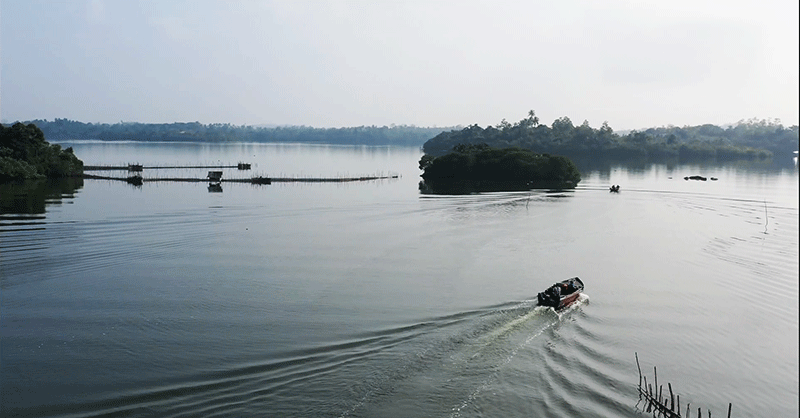
1. Balapitiya
Home to a pristine, uncrowded beach on the west coast of Sri Lanka, Balapitiya is one of the most picturesque places on the island, and is also a top-ranking beach holiday destination for travelers who love to explore a peaceful and isolated beach. While the beaches are the key ingredient of Balapitiya’s tourist draw, there is a lot of activities to keep you busy beyond the beaches, including exploring Madu River estuary, diving and snorkelling, scenic trails, among other activities.
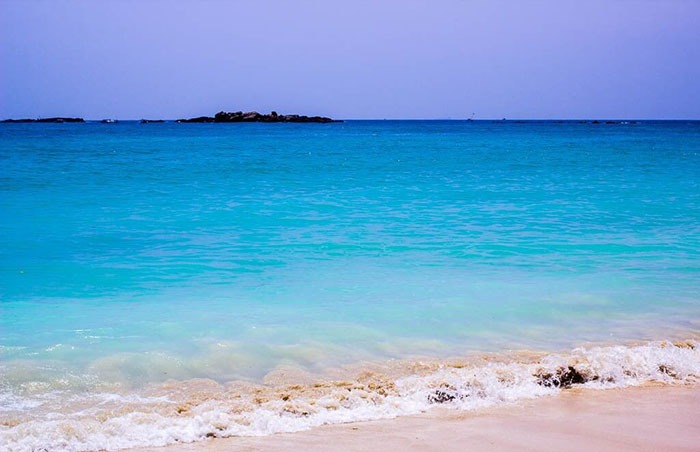
2. Jungle Beach
This one-mile-long secluded beach is tucked away 2km from Galle city. This is the beach is well off the main road and surrounded by a thick forest. Thin jungle hideout is very unpopular and you will not encounter hordes of tourist here. The beach is visited by a few local travellers that are coming to see the nearby peace pagoda (peace temple).
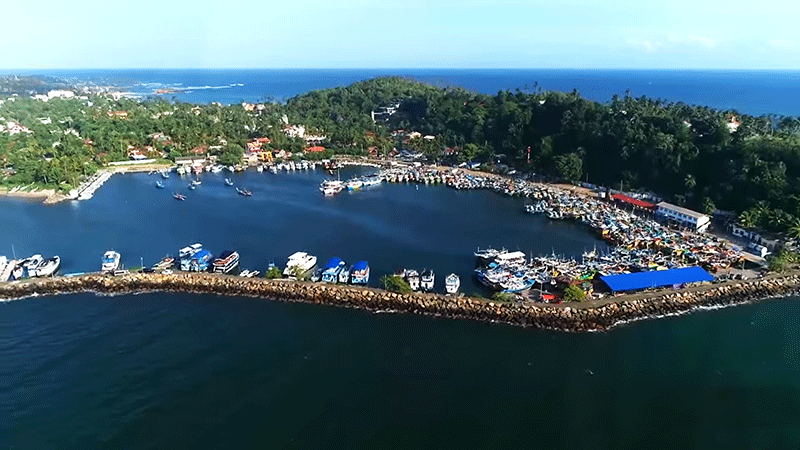
3. Mirissa, Matara
Matara is the capital of southern Sri Lanka, which is also one of the biggest cities of Sri Lanka. Mirissa is a small city between Galle and Matara, this oceanfront small city has a large number of rest houses and guest houses as well as other economical accommodation facilities.
Mirissa attracts a large number of foreign travellers and most of them are beach holiday lovers. The food scene is a big Mirissa is also popular for seafood as well as water sports. In fact, Mirissa is the most popular city, where travellers gather to witness blue whales. A large number of travellers set off on a whale-watching boat in search of giant blue whales in the whale commissioned sea off southern Sri Lanka.
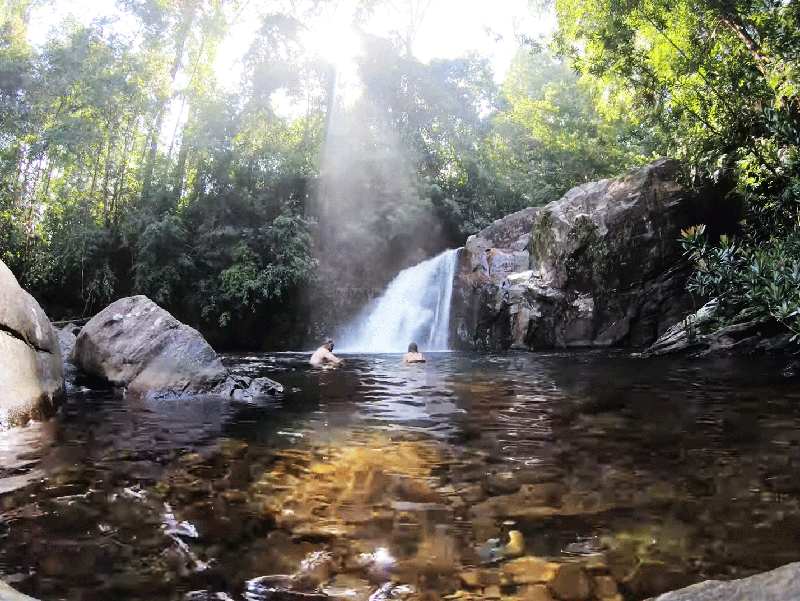
4. Kitulgala
Located at the foothills of Sri Lanka’s central mountain range, Kitulgala is a dream destination for the adventure enthusiast. Nick-named as the adventure playground of Sri Lanka, it offers places for white water rafting, caving, trekking, hiking, rain forest explorations, waterfall abseiling, bird watching and many more.
5. Belihuloya
Belihuloya is a small city located between Colombo and Bandarawela, which is a popular mountain resort in Sri Lanka. Belihuloya is predominantly a nature holiday destination and it is an appeal to a wide variety of activities including rain forest exploration, bird watching, trekking and hiking. The remote but accessible nature tourist spot ranks among the best places in Sri Lanka for nature tours and outdoors.
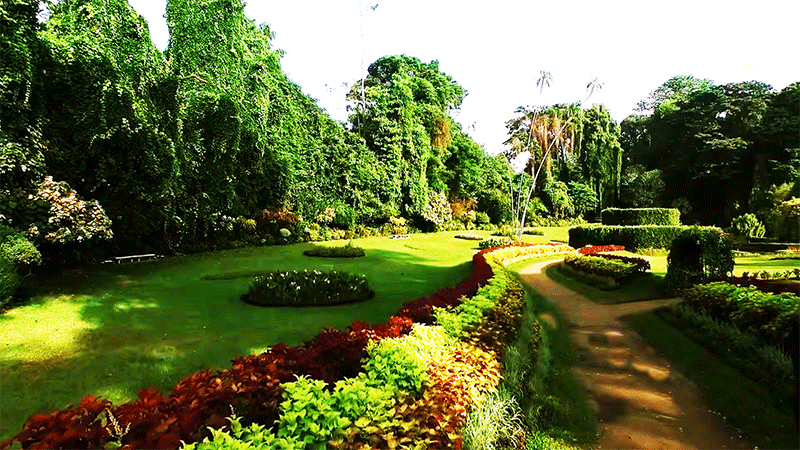
6. Peradeniya
Home to the Peradeniya University, which is one of the oldest universities of Sri Lanka, nestled among the green-capped mountain and valleys. Peradeniya considered being one of the smartest small towns in Sri Lanka.
Peradeniya university produces thousands of graduates every year and it is one of the most reputed higher education institutions on the island. However, from the tourism point of view, it is not the university, which is the main draw in the city, there is a much more important tourist attraction, which is the Peradeniya botanical garden. The city offers many things to do and see beyond the campus, including visiting tea gardens, scenic trails, rock climbing among other activities.
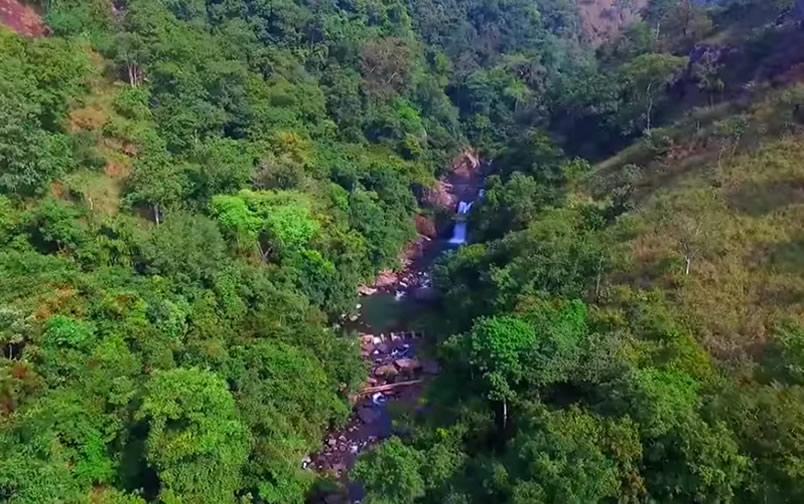
7. Ella
Another popular mountain resort in the south of Nuwara Eliya. By far Nuwara Eliya is the main tourist destination in the mountain, which attracts a large number of local travellers. But Ella is visited by foreign travellers. They all gather to Ella to enjoy the peaceful mountain resorts and its pristine mountains, waterfalls and tea gardens. Trekking and hiking are the most popular activities here and mini-Adams peak, Ella rock, nine-arch bridge and Idalgashinna are some of the most popular places for hiking in Ella.
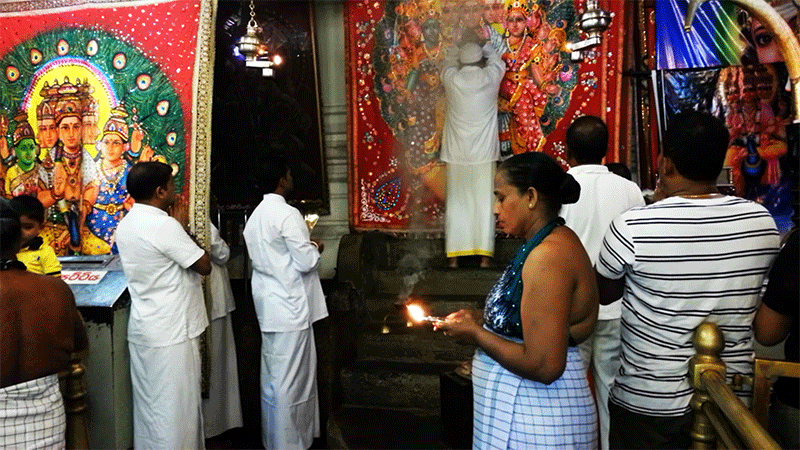
8. Kataragama
A secluded small town tucked away near the southern tip of Sri Lanka. Kataragama had been one of the least populated towns of Sri Lanka and it was surrounded by thick forest. Yala national park, which is one of the most popular wildlife reserves for a safari in Sri Lanka, is sharing the same border with Katargama in some areas.
Kataragama is the home to the most sacred temple on the southern province, which is popular as Kataragama temple of Murugan temple. The temple hosts the annual festival of Esala ceremony in the month of July, which is one of the most popular festivals on the island and attended by Buddhist as well as Hindu devotees.
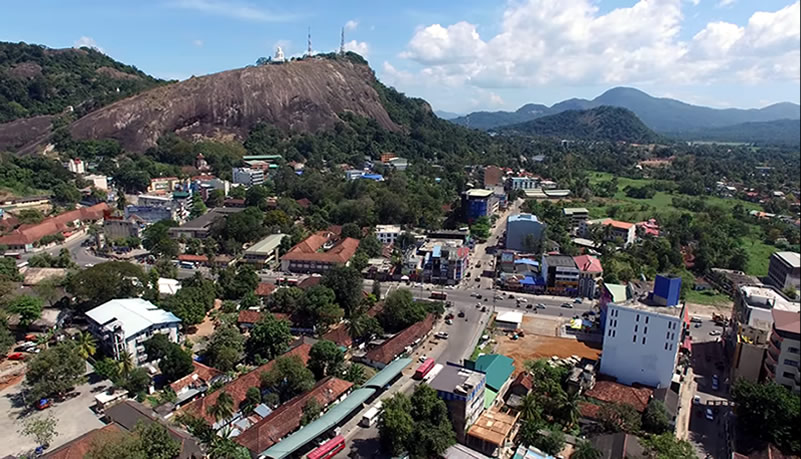
9. Kurunegala
Kurunegala is one of the oldest cities in Sri Lanka, and it was the capital of Sri Lankan kings in the 13s. Its population exceeds 200000. Kurunegala is home to a large number of temples and many other archaeological places. This central province city places fourth in the culture subcategory while ranking first for sights and landmarks and cracking the top three in terms of shopping.
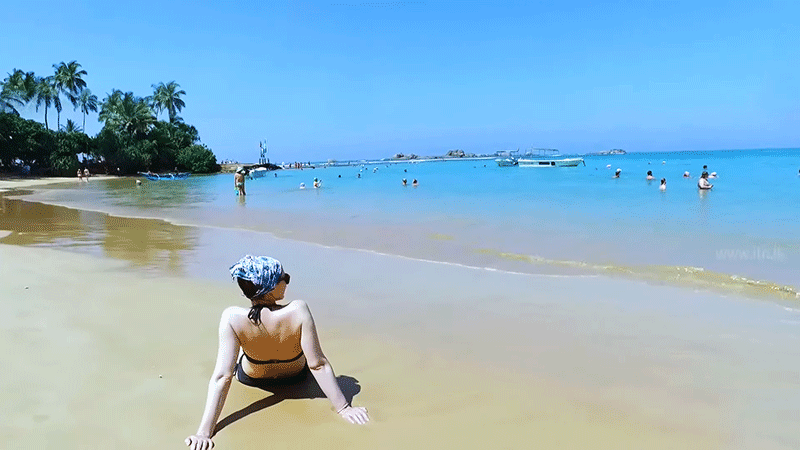
10. Tangalle
Boasting plenty of white-sand beaches, Tangalle conquers the parks and outdoors subcategory but also fares extremely well for restaurants, museums and watersports and culture, ranking second, fifth and eighth, respectively.
Practical Tips for City Hopping in Sri Lanka
- Transportation: Consider hiring a car with a driver for intercity travel. It’s comfortable and allows for flexible sightseeing.
- Accommodation: Book in advance, especially during peak season (December to March).
- Dress Code: Respect local customs by dressing modestly, especially when visiting religious sites.
- Language: While Sinhala and Tamil are official languages, English is widely spoken in tourist areas.
- Currency: The Sri Lankan Rupee (LKR) is the local currency. ATMs are available in cities, but carry cash for smaller towns.
- Health and Safety: Stay hydrated, use mosquito repellent, and be cautious with street food. Always check current travel advisories before your trip.
